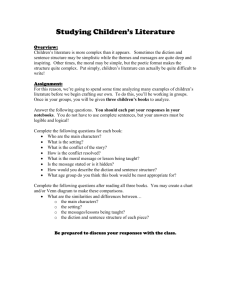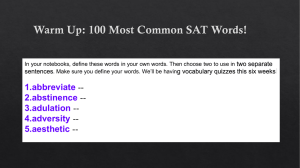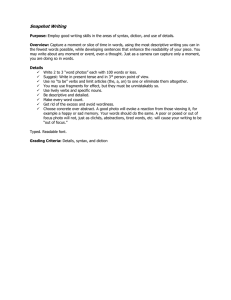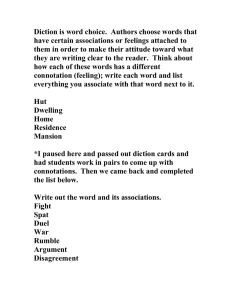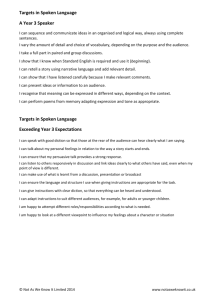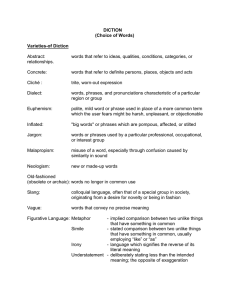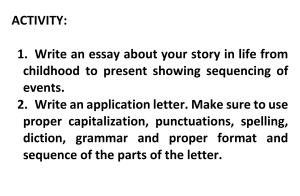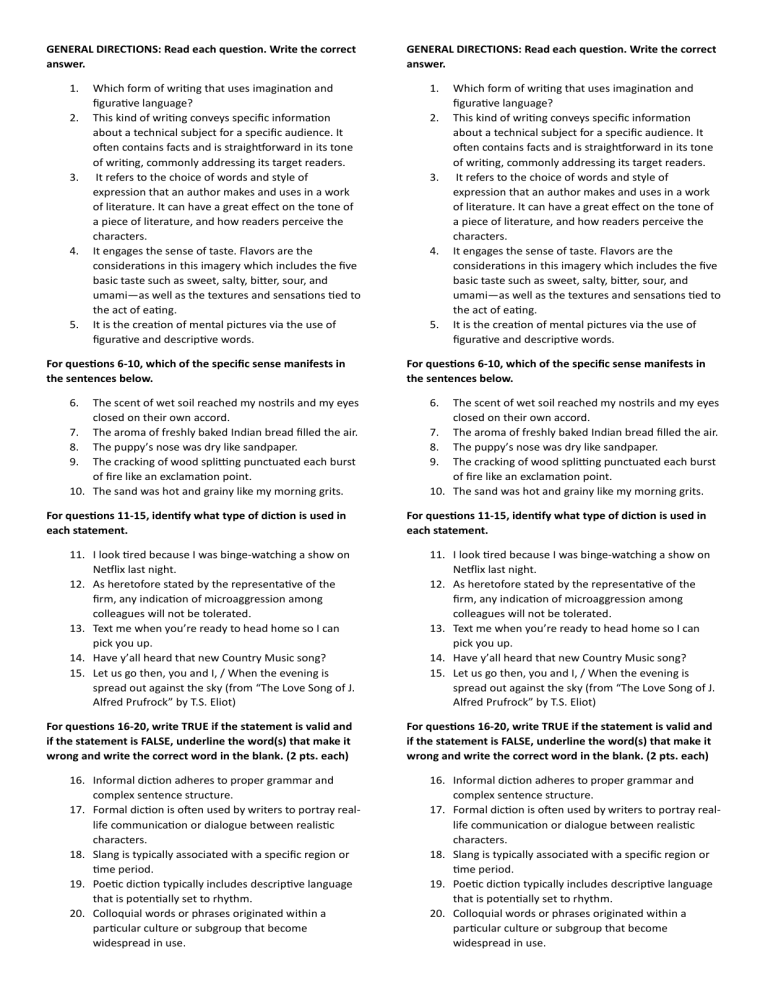
GENERAL DIRECTIONS: Read each question. Write the correct answer. 1. 2. 3. 4. 5. Which form of writing that uses imagination and figurative language? This kind of writing conveys specific information about a technical subject for a specific audience. It often contains facts and is straightforward in its tone of writing, commonly addressing its target readers. It refers to the choice of words and style of expression that an author makes and uses in a work of literature. It can have a great effect on the tone of a piece of literature, and how readers perceive the characters. It engages the sense of taste. Flavors are the considerations in this imagery which includes the five basic taste such as sweet, salty, bitter, sour, and umami—as well as the textures and sensations tied to the act of eating. It is the creation of mental pictures via the use of figurative and descriptive words. For questions 6-10, which of the specific sense manifests in the sentences below. 6. The scent of wet soil reached my nostrils and my eyes closed on their own accord. 7. The aroma of freshly baked Indian bread filled the air. 8. The puppy’s nose was dry like sandpaper. 9. The cracking of wood splitting punctuated each burst of fire like an exclamation point. 10. The sand was hot and grainy like my morning grits. For questions 11-15, identify what type of diction is used in each statement. GENERAL DIRECTIONS: Read each question. Write the correct answer. 1. 2. 3. 4. 5. Which form of writing that uses imagination and figurative language? This kind of writing conveys specific information about a technical subject for a specific audience. It often contains facts and is straightforward in its tone of writing, commonly addressing its target readers. It refers to the choice of words and style of expression that an author makes and uses in a work of literature. It can have a great effect on the tone of a piece of literature, and how readers perceive the characters. It engages the sense of taste. Flavors are the considerations in this imagery which includes the five basic taste such as sweet, salty, bitter, sour, and umami—as well as the textures and sensations tied to the act of eating. It is the creation of mental pictures via the use of figurative and descriptive words. For questions 6-10, which of the specific sense manifests in the sentences below. 6. The scent of wet soil reached my nostrils and my eyes closed on their own accord. 7. The aroma of freshly baked Indian bread filled the air. 8. The puppy’s nose was dry like sandpaper. 9. The cracking of wood splitting punctuated each burst of fire like an exclamation point. 10. The sand was hot and grainy like my morning grits. For questions 11-15, identify what type of diction is used in each statement. 11. I look tired because I was binge-watching a show on Netflix last night. 12. As heretofore stated by the representative of the firm, any indication of microaggression among colleagues will not be tolerated. 13. Text me when you’re ready to head home so I can pick you up. 14. Have y’all heard that new Country Music song? 15. Let us go then, you and I, / When the evening is spread out against the sky (from “The Love Song of J. Alfred Prufrock” by T.S. Eliot) 11. I look tired because I was binge-watching a show on Netflix last night. 12. As heretofore stated by the representative of the firm, any indication of microaggression among colleagues will not be tolerated. 13. Text me when you’re ready to head home so I can pick you up. 14. Have y’all heard that new Country Music song? 15. Let us go then, you and I, / When the evening is spread out against the sky (from “The Love Song of J. Alfred Prufrock” by T.S. Eliot) For questions 16-20, write TRUE if the statement is valid and if the statement is FALSE, underline the word(s) that make it wrong and write the correct word in the blank. (2 pts. each) For questions 16-20, write TRUE if the statement is valid and if the statement is FALSE, underline the word(s) that make it wrong and write the correct word in the blank. (2 pts. each) 16. Informal diction adheres to proper grammar and complex sentence structure. 17. Formal diction is often used by writers to portray reallife communication or dialogue between realistic characters. 18. Slang is typically associated with a specific region or time period. 19. Poetic diction typically includes descriptive language that is potentially set to rhythm. 20. Colloquial words or phrases originated within a particular culture or subgroup that become widespread in use. 16. Informal diction adheres to proper grammar and complex sentence structure. 17. Formal diction is often used by writers to portray reallife communication or dialogue between realistic characters. 18. Slang is typically associated with a specific region or time period. 19. Poetic diction typically includes descriptive language that is potentially set to rhythm. 20. Colloquial words or phrases originated within a particular culture or subgroup that become widespread in use.
